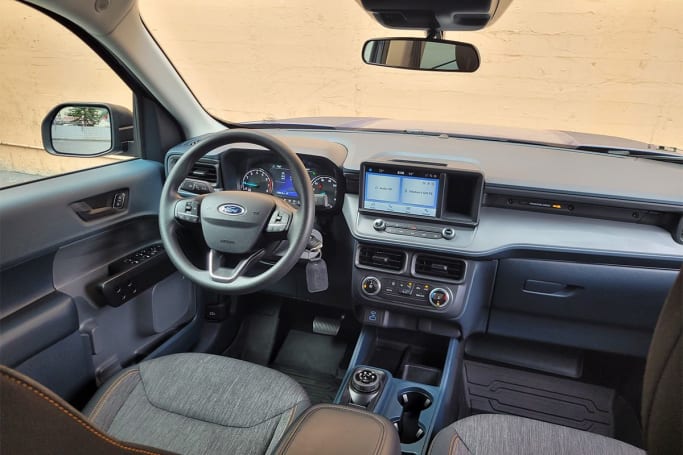The Maverick is clearly the entry-level model in Ford’s US ‘pick-up’ line-up, positioned beneath the bigger Ranger and biggest F-150.
There’s a three model line-up in the US - XL, XLT and Lariat (following the same naming protocols as its bigger siblings).
The XL is the workhorse of the range, riding on steel wheels, and begins the range at US$23,400 (approx. $36,500), while XLT starts at US$26,315 (approx. $41,100) and the more generously equipped Lariat is priced from US$34,855 (approx. $54,450).

For context, in the US, the Escape range begins at US$28,000 (approx. $43,740) and the Bronco Sport from US$31,230 (approx. $48,780), so the Maverick is one of the more affordable members of the Ford family, which is no doubt a big part of its appeal.
In terms of standard equipment on the XLT we drove, it included 17-inch alloy wheels, LED headlights, keyless entry (but not ignition), cruise control, single-zone air conditioning, a 4.2-inch instrument display and a six-speaker sound system with Bluetooth connectivity and an 8.0-inch touchscreen running Ford’s 'Sync 4' multimedia set-up.

The Tremor is a new addition to the line-up, adding some genuine off-road credentials to the XLT or Lariat in the form of a one-inch suspension lift, Ford’s 'Trail Control' drive mode system, unique off-road biased suspension and all-wheel drive with four-wheel drive lock and the 2.0-litre EcoBoost as standard.
Cosmetic upgrades include a new grille and front fender vent, blacked-out Ford logos and lights plus orange tow hooks.




















